Matador Network's Blog, page 867
May 4, 2020
Carnival Cruise Lines to resume

Carnival Cruise Line, the world’s largest cruise line which once employed Shaquille O’Neal as its Chief Fun Officer, is poised to be the first big kid back on the cruise ship block. Carnival announced today that it would resume limited cruising on August 1.
Eight Carnival ships will begin as-yet-unannounced itineraries from three ports later this summer, which Carnival is calling the first phase of its return to operations. Port Canaveral near Orlando will launch trips on the Breeze and Elation ships. Galveston, Texas, will be homeport to the Dream, Freedom, and Vista. And Miami — the busiest passenger cruise port in the world — will have Horizon, Magic, and Sensation leaving August 1.
“We are committed to supporting all public health efforts to manage the COVID-19 situation,” Carnival stated in a Monday morning press release. “We are taking a measured approach, focusing our return to service on a select number of homeports where we have more significant operations that are easily accessible by car for the majority of our guests.”
As such, all other Carnival operations will remain paused through August 31. It also canceled all Carnival Spirit Alaskan cruises out of Seattle, as well as Spirit’s Vancouver-Honolulu cruise on September 25 and Honolulu-Brisbane on October 6. All cruises in Australia — a country that’s on the brink of eliminating COVID-19 — are also canceled through August 31. Affected passengers can go online to obtain refunds or a credit for a future cruise.
Though Carnival is the first major cruise line to return to operations, it is not the first cruise line to pick back up. Earlier this year, Bahamas Paradise Cruise Line announced it would resume short-trip service from West Palm Beach to Grand Bahama and Nassau beginning on June 13.
So while it may be some time until the mega-ships roam free through the oceans again, it seems the world’s biggest cruise line will be back in action in a few short months. It may not be the full-scale return to the glory days of cruising we saw in recent years, but it’s a promising first step. And for those of us happy to jump back onboard, it gives us all a little to look forward to. 

More like this: Here’s what cruising could look like in 2030
The post Carnival Cruise Line set to resume operations on August 1 appeared first on Matador Network.
May 1, 2020
Botswana evacuates black rhinos

After a sharp increase in rhino poaching in March left at least six rhinos dead in Botswana’s northwest, government workers are trying to evacuate the few black rhinos left in the area to safety.
There are only a few black rhinos remaining in the area, but locating them has proven difficult amid the severe flooding making many roads inaccessible.
The absence of safari tourists due to the pandemic has spurred on poachers. Derek Joubert and his wife, Beverly, who lead Rhinos Without Borders, an organization that aims to relocate rhinos from poaching zones in South Africa to safer areas in Botswana, are assisting the efforts to evacuate the rhinos from this area of Botswana to an undisclosed location.
According to a statement by the Botswana Department of Wildlife and National Parks, “The Ministry is very conscious that poachers may try to take advantage of the lockdown and the lack of movement by tourists in remote areas to carry out their illegal activities.”
Although there has been no poaching incident since the lockdown started on April 3, 2020, in Botswana, it is believed to be the result of heightened anti-poaching surveillance. The same statement made by the Botswana Department of Wildlife and National Parks on April 27, explains that six poachers have been killed in the space of one month.
Regarding this particular evacuation, time is of the essence. Joubert and government workers believe the move must be completed by early May’s full moon on May 7 as poachers use the moon’s light to track and kill the animals without flashlights.
Joubert told National Geographic, “Every time there’s a blood moon or a full moon in Africa everyone involved in conservation — particularly conservation of rhinos — shivers.” 

More like this: This pandemic will devastate Africa’s wildlife unless we rally right now
The post Botswana is evacuating its endangered black rhinos to save them from poachers appeared first on Matador Network.
Netflix's 'Never Have I Ever' review

Devi Vishwakumar is angry. So angry she throws her geometry textbook through her (closed) bedroom window. And to be fair, she has a right to be frustrated. Her crush doesn’t look her way, and as a horny teenage girl who thinks she’s ready to “bone down,” that’s devastating. Her stunning, accomplished cousin Kamala is living with her family while she finishes her Ph.D. And the fact that she’s still traumatized by the death of her father isn’t helping. She’s still learning to manage her overwhelming emotions, and sometimes her temper takes over.
For Asian girls, anger is usually an off-limits emotion, at least in pop culture. Asian women are typically depicted as submissive, docile, and demure. But in Netflix’s new show Never Have I Ever, created by Mindy Kaling, Devi is explosive. She sees herself as a hot, smart, powerful teenage girl. But there is so much in her way. It’s not just grief over her father’s death. Her peers have rendered her invisible, too. They don’t invite her to parties or really pay attention to her at all.
Like all teenage girls, she wants to be normal — that loaded term wielded by high schoolers who are struggling to form an identity while also feeling pressured to conform. Devi’s situation is different though: As a first-generation Indian-American girl with brown skin and dark hair, she’ll never be able to embody restrictive (and racist) white beauty standards — and she’s teased for it by her high school rival, a white boy named Ben.
Her upbringing is stricter, too, and influenced by religion. There’s a Hindu altar in her living room (and her mother, Nalini, is livid over the textbook incident because it touched the ground outside after being blessed at the Hindu temple, a huge faux pas). Devi sees how hard her family’s cultural traditions can be on women specifically just by witnessing how Kamala is treated: Her parents have already found a potential husband for Kamala back in India, but she’s instructed to hide her intelligence and ambition in order to secure the match.
Devi is being pulled in many different directions: She prays for her mother to tell her she’s proud of her, yet she also wants to sneak out to parties and get drunk with her crush. All things considered, that sounds like a normal conflict for a teenage girl, one that would weigh heavily on anyone. But Devi isn’t just anyone — she’s a minority in a whitewashed town, already an outsider at a time when feeling excluded is extra tough.

Photo: Netflix
Instead of repressing her unwieldy emotions, Devi sees a therapist who teaches her how to process her feelings, grief in particular. It’s a breath of fresh air to see an Asian woman given space to safely express exactly how she feels. Instead of staying silent and fading into the background with the wallpaper like a well-behaved woman, Devi does the opposite. She learns from her outbursts (including one unfortunate incident involving a Holocaust joke, which she immediately regrets) and the message is clear: Our emotions are not inherently shameful, not even anger. It’s what we do with them that matters.
Devi’s anger issues do culminate in a confrontation with her mother, and the resulting argument is a devastating reflection of the complicated conflicts every mother and daughter must work through. But the climax of the show is also attuned to the challenges Asian women in particular face when they try to express their emotions.
Following their argument, Nalini visits her daughter’s therapist, who quips that she didn’t think she “believed in therapy.”
“I don’t. It’s for white people,” Nalini responds to the dumbfounded therapist, a black woman.
Nalini believes her role is to be the backbone of the family, always strong, never wavering or showing weakness. But she’s grief-stricken too in the aftermath of her husband’s death. It’s just that she’s never felt like she was allowed to express that. Only when she’s able to break down in front of Devi can the two begin to repair their relationship.

Photo: Netflix
One scene toward the end of the show perfectly encapsulates Devi’s predicament, one that many children of immigrants face: She stands on the beach, saying a prayer in Hindu for her father… while wearing a jean miniskirt, flanked by her mother and cousin, both clad in a traditional sari. Devi is navigating two worlds — one of tradition that requires women to be in control of their emotions and obedient, and another that values autonomy perhaps a little too much. But Devi doesn’t fall neatly into either category, and that is a source of power. She’s a little wild, a little rebellious, but her family is still the most important aspect of her life, her safety net, and the force that will guide how she forms her own value system.
It takes work to unlearn family values, no matter who you are or where your family is from. Devi and her mother put her in that work. It’s gratifying to see two brown women, a mother and daughter, given the same emotional breadth too often only given to “complex” male, and white, television characters. Asian women and girls deserve role models in entertainment that feel deeply and passionately, and develop healthy ways of coping with a full range of emotions.
Never Have I Ever acknowledges a side of Asian women that most depictions ignore — unruly, rebellious, and hot-headed. Devi’s anger might overwhelm her sometimes, but the show doesn’t villainize or shame her for wrestling with complicated emotions. Instead, Never Have I Ever affirms that all our emotions are valid. 

More like this: What we lose when food shows are celebrity-focused
The post On ‘Never Have I Ever,’ angry Asian girls find a voice appeared first on Matador Network.
International plants you can grow
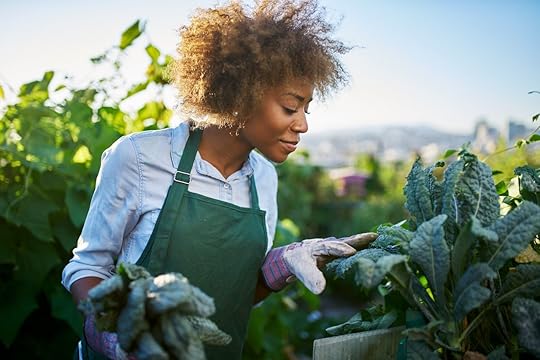
Spring is well underway, and with it comes the growth of familiar regional flowers and foliage. But beyond the usual seasonal suspects, there’s a huge variety of plants from around the world that can transform your garden and whisk you away to faraway places.
Expert plant cultivator or complete novice, the proven therapeutic benefits of being outside, combined with our desire to know where our food comes from, means that gardening is an increasingly popular hobby. Add to it the access we have to new and interesting plant and seed varieties that can take us to every corner of the world, and you’ll soon be addicted to your green patch.
This season we’re going around the world in 17 plants, with a selection of our favorite garden additions that allow you to travel the globe through your own outdoor space.
Europe
San Marzano Tomatoes
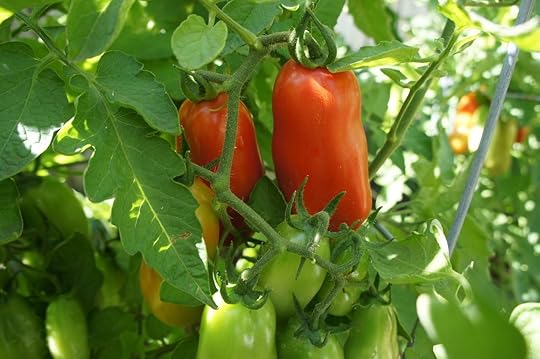
Photo: Andrew Kotch/Shutterstock
Tomatoes thrive throughout the summer months and are one of the easiest plants to grow at home. With hundreds of varieties to choose from, however, it can be difficult to decide between large, misshapen heirlooms that epitomize the season or sweet cherry fruits that grow in abundance.
For a plant that will give all summer long and provide during winter too, it’s the tomato commonly used in passata that wins our attention. Originating from a small town in Naples, Italy, where plants enjoy the rich volcanic soil and warm Meditteranean climate, San Marzano tomatoes are easy to grow and prosper in a sunny location where temperatures remain constant. Seeds are available from most suppliers, including the renowned Johnny’s Seeds, and young plants can often be found at local garden centers and nurseries. Search Monrovia for a comprehensive list of garden centers by zip code.
Italian pumpkins and squash
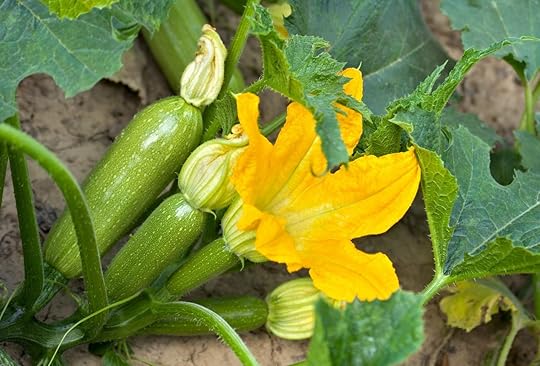
Photo: Anastasiia Malinich/Shutterstock
Although native to the Americas, it is believed that the Italians grow and eat more Cucurbita than the United States. What’s more, the varieties on offer go far beyond the classic orange gourd synonymous with America’s fall. Divided into two main growing categories, summer and winter, the Italian squash is a delicious addition to the garden. The summer squash, also known as zucchini, is typically harvested in its youth and has a more tender, edible skin. Winter squash, also known as zucca, have tougher rinds as a result of allowing the fruit to mature for longer.
The growth habits of both zucchini and zucca are similar, and most varieties require space to spread. Many benefit from sprawling their vines up and over trellises or other sturdy structures so that the fruit can hang down, which helps to improve air circulation and reduce the risk of disease and pests. If growing space is limited, look for more compact bush varieties, some of which can be easily grown in containers or small raised beds.
For authentic Italian Cucurbita seeds, Seeds From Italy is a small, independent company growing and selling varieties from Franchi Seeds, Italy’s oldest family-owned seed company.
English roses
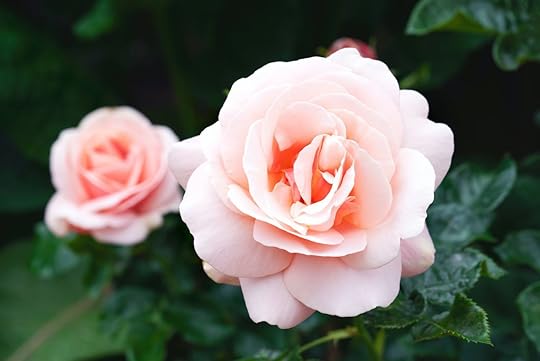
Photo: Ann in the uk/Shutterstock
England’s quintessential bloom graces gardens up and down the British Isles and is now widely grown all over the United States. From enormous climbing canes that cover archways and trellises to smaller shrub varieties that can be grown in containers, the English rose might be fussy, but what it lacks in ease she makes up for in beauty.
The original and principal English rose breeder, David Austin Roses has an online store that offers a vast array of varieties in pastel shades of apricot, peach, and pink, as well as more luxurious reds and creams. Shipped to growers as either bare roots or two-quart pots, English roses are fast-growing and prolific if tended to correctly. A vigorous climbing variety will cover a large, unsightly wall or add height in the garden when trained onto an arch or obelisk. If space is an issue, smaller shrub roses can be planted in containers and placed strategically for maximum impact.
English lavender
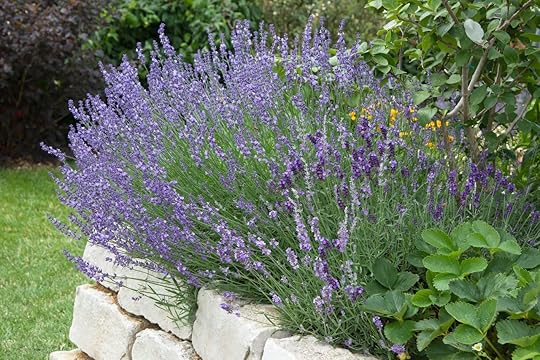
Photo: Jeanette Dietl/Shutterstock
Wonderfully fragrant, as well as pleasing on the eye, English lavender is a beautiful addition to any outdoor space, especially when in bloom. Flowering from June to August, its delicate purple blossoms invite bees and butterflies to loiter, which are essential to the success of a productive garden.
Tougher than its French cousin, English lavender can successfully overwinter in most gardening zones of the United States and, as such, is a preferred choice when it comes to deciding what kind of lavender plant to invest in. Unlike French lavender, the English varieties make great cut flowers and have excellent culinary properties also.
French thyme

Photo: pilialoha/Shutterstock
A low-growing shrub that works wonderfully as an ornamental plant or a culinary herb, French thyme originates from the Provence region of France and is an integral part of both French cooking and heritage. A perfect companion to several vegetables in the garden, including eggplant and potatoes, it is simple to grow and maintain and is considered a perennial throughout most of the United States, meaning it will return year after year with the first signs of spring.
For a vast selection of culinary herbs, visit Southern Exposure Seed Exchange. With over 800 varieties of seeds including four different types of thyme, Southern Exposure Seed Exchange focuses on producing natural seeds that are guaranteed to grow in the United States.
Asia
Japanese eggplant
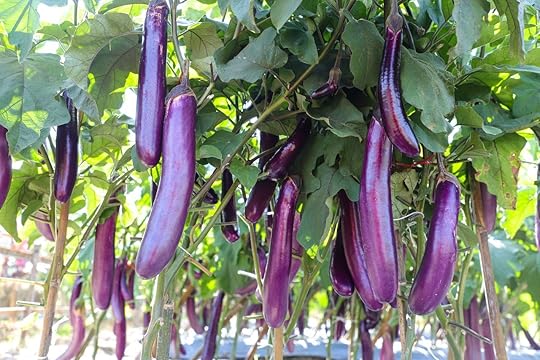
Photo: tdee photo cm/Shutterstock
Eggplants have been cultivated in Asia for centuries and with so many regional variations, it’s hard to know which ones to add to your garden. Thinner than the more common globe species most are familiar with, Japanese eggplants share all the same properties as other traditional varieties, however, their fruit is slender and range in color.
Similar to the San Marzano tomato, sunshine and heat are a Japanese eggplant’s best friends. For a wider, more productive eggplant bush, gardeners should nip the top of the young plant when it reaches six inches tall. As the plant grows and matures throughout the season, pruning ripe fruit encourages more eggplants to develop.
Rhubarb

Photo: Debu55y/Shutterstock
A cooler climate perennial, rhubarb is native to China and has long been recognized for its healing properties, as well as being known for its delicious partnership with strawberries.
A vegetable by definition but typically consumed as a dessert, it is the stalks of this large plant that are edible, the leaves are in fact poisonous and have been linked to the development of kidney stones. Typically sweetened with sugar and baked in pies, crisps, and crumbles, rhubarb stalks are harvested from the garden early to mid-spring before the plant dies back in autumn. Patience is a virtue, however, with this slow-growing garden addition. It is advisable not to pick from the plant in its first year so as to encourage establishment. In its second season and beyond, be careful not to harvest more than a third of each plant’s stalks — this helps to avoid weakening the rhubarb for future growth.
Although it is best grown directly in the ground in a sunny location, rhubarb prefers not to get too hot; as such, some gardeners may find a partially shaded area to be a more favorable place for it to thrive. A well-planted rhubarb patch given moderate attention at the beginning and end of each growing season will yield beautiful, bright red stalks for years to come. For rhubarb roots to plant this spring, visit Renee’s Garden for a popular variety known as Crimson Red.
Meyer lemons
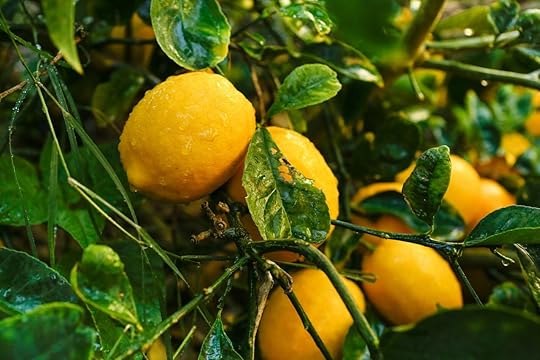
Photo: David Tonelson/Shutterstock
Much less acidic than an ordinary lemon and sweet enough to be used raw, the Meyer lemon is a hybrid citrus fruit originating from China, where it is grown for both its decorative and culinary properties.
Brought to US shores in the early 1900s, the Meyer lemon was first cultivated in California, Florida, and Texas. As it limited to these areas until the early 2000s, it was Martha Stewart who popularized this once-unheard variety of citrus and propelled it to the forefront of the culinary world.
A heat-loving sun-worshiper, Meyer lemon trees are containerized where temperatures fall below freezing. In California, Arizona, South Texas, Louisiana, and Florida, trees are planted directly in the ground and can have a lifespan of up to 30 years. Although much smaller, a potted tree can still produce plenty of fruit if sheltered from the wind and cold throughout fall and winter, during which time it makes an excellent indoor plant.
Indian cucumbers
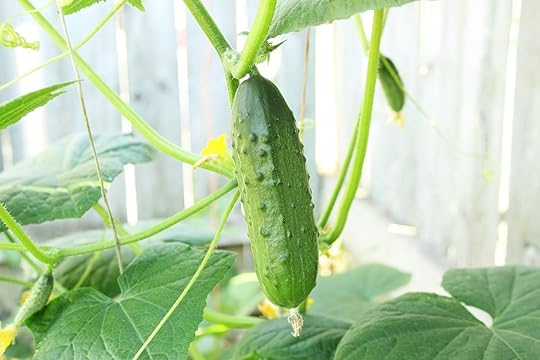
Photo: govindji/Shutterstock
A favorite in the vegetable garden, juvenile cucumbers can be harvested for pickling as little as 50 days after planting. Alternatively, allowing them to grow to their full potential results in a refreshing fruit that needs little preparation.
Native to India, cucumbers once grew in the wild before being domesticated by early Indian civilization. Today, there are several Indian varieties widely available for growing in the United States, all of which enjoy the warm temperatures of summer. Seeds of India is a small horticultural company specializing in vegetables, herbs, and flower seeds that are popular in the subcontinent.
Like squash, cucumbers tend to enjoy having space to spread. Grow vertically in smaller gardens where space is limited by allowing the plant’s soft tendrils to weave and wind their way onto a sturdy structure. The advantage of training a cucumber plant to grow upwards is being able to see the fruit grow more clearly, it also greatly reduces the risk of fungal diseases that can wipe out a crop overnight.
Thai chilies
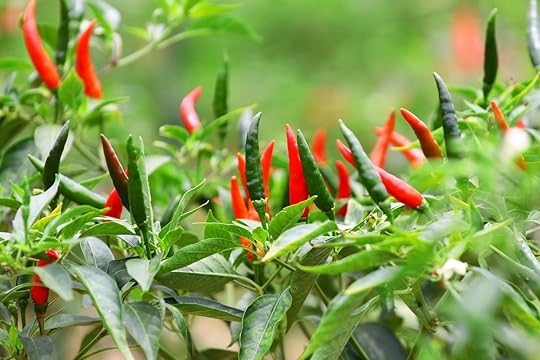
Photo: Cherngchay Donkhuntod/Shutterstock
There are approximately 75 different varieties of chili grown in Thailand, but it is the small yet powerful bird pepper that is most widely known. Thought to be 15 times hotter than the average jalapeño, the bird pepper was brought to Southeast Asia in the 16th century. Sometimes referred to as the Thai dragon pepper, this chili ripens to an unmissable bright red and with plants producing as many as 150 fruits each, a little goes a long way. This potent chili is relatively easy to grow and like its tomato and eggplant relatives in the nightshade plant family, it thrives in full sun.
For a diverse selection of chili and pepper seeds, including this fiery fruit, visit Refining Fire Chilis who specialize in growing rare chilis are educating growers.
The Americas
Potatoes

Photo: Emma Brewster/Shutterstock
The top vegetable crop in North America, potatoes are grown for commercial use in 30 different States, which means growing them in a home garden is a realistic possibility across much of the country. There are multiple ways to grow potatoes depending on the conditions of your outdoor area. Where space is an issue, grow bags are an excellent way to raise healthy plants that yield a plentiful harvest. Alternatively, planting and growing potatoes using the traditional hilled rows method is tried and true and has been used by farmers for centuries.
When it comes to choosing which variety to grow, the most important aspect to consider is where the seed potatoes come from. Not to be confused with potato seeds, seed potatoes are small parts of the vegetable that have what growers call “eyes.” An eye is a small bud that will become the plant, therefore is it essential the seed potato has at least one. Using store-bought vegetables as seed potatoes is possible, however, not recommended. Diseases are often carried over from the previous season, which can seriously affect a homegrown crop; therefore choose certified seed potatoes for the best possible results.
Cosmos
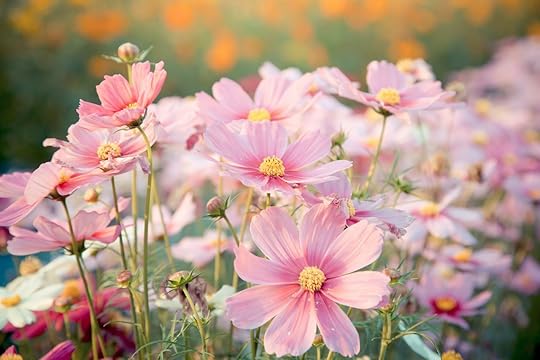
Photo: sirichai chinprayoon/Shutterstock
Native to the meadowlands of Mexico and South America, the cosmos is as much at home in a manicured flower bed as a field of wild blooms and brings both color and movement to the summer garden. Popular in the United States, these daisy-like flowers are noted by experienced gardeners and beginners alike for their abundance and ease. Sown directly from seed and requiring no soil preparation, cosmos take approximately seven weeks to bloom. Once they do, however, they’re wonderfully prolific and produce colorful flowers all season long.
To get a head start, gardeners sow seeds indoors up to six weeks before the last spring frost and transplant to larger pots once they reach four inches tall. Like all plants that have been raised indoors, young seedlings should be hardened off to the external elements before planting them in their permanent home. For unusual color variations combined with classic hues, purchase seeds from the talented Erin Benzakein of Floret. Recognized as one of the nation’s leading farmer-florists, Erin’s heart and soul goes into growing and selling American flowers and it shows in everything her farm produces.
Marigolds

Photo: milart/Shutterstock
Bold and beautiful, marigolds are the ancient flower of the Aztecs that are believed to guide the spirits of the dead to visit the living during Mexico’s Dia de los Muertos celebrations. For three days at the end of October, altars and gravesites of lost loved ones are bedecked in an array of colorful elements, including the bright and strong-smelling marigold, which is considered the traditional flower to honor the dead.
It is the marigold’s unmistakable scent and striking color that makes it a great addition to the summer garden, attracting beneficial insects such as ladybugs to help to keep the pest population down. The bright blooms invite important pollinators and are said to be one of the best floral additions to a healthy, productive vegetable patch.
Africa
African blue basil
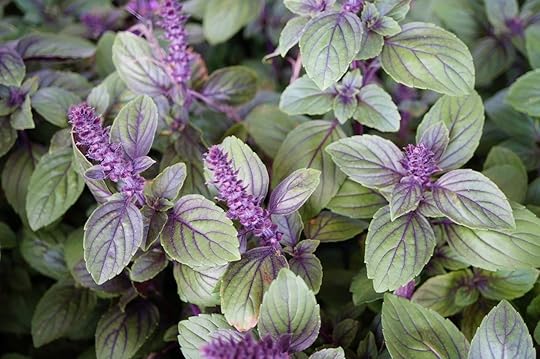
Photo: EQRoy/Shutterstock
Basil is a must in the summer garden, however, traditional varieties are often prone to disease and their lifespan is relatively short. In contrast, this African descendant is a much hardier alternative that not only looks attractive but can also be used in the kitchen also. A hybrid cross between a common garden basil and an East African shrub from the forests of Kenya, Tanzania, and Uganda, the African blue basil is a prolific garden plant.
As an added bonus, it is perhaps the only basil to be considered a perennial, which means this lesser-known variety will continue to reappear every season provided it isn’t susceptible to frost.
Agapanthus
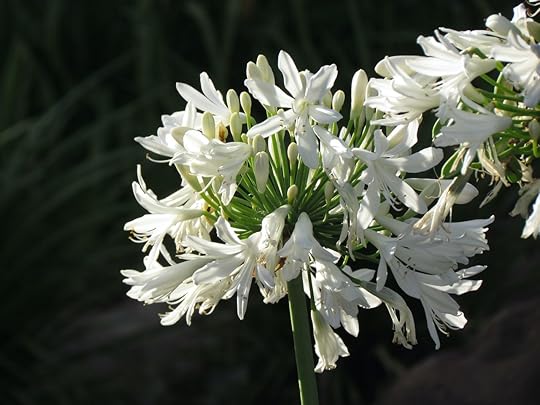
Photo: Duncan Kelly/Shutterstock
More commonly known as Lily of the Nile, these sun-loving plants produce large spherical flowers in brilliant shades of blue and white and are a landscape staple in warmer regions. A perennial in the southern United States, agapanthus grows best in USDA Zones 7-11. In cooler areas where winters can be hard, containerized plants can be stored indoors for repeat blooming the following season.
Australia
Eucalyptus

Photo: Ammak/Shutterstock
Commonly associated with the koala bear, this Australian native makes up approximately three-quarters of its host country’s forests. There are reportedly over 700 species of eucalyptus growing in abundance in Australia, and although most varieties prefer a more exotic climate, the evergreen globe eucalyptus can be nurtured here in the United States.
Hardy in USDA zones 8-10, the globe eucalyptus can reach towering heights. For the home gardener, it makes a great containerized shrub and with regular pruning and can be kept as a manageable plant for many years.
Australian mint bush
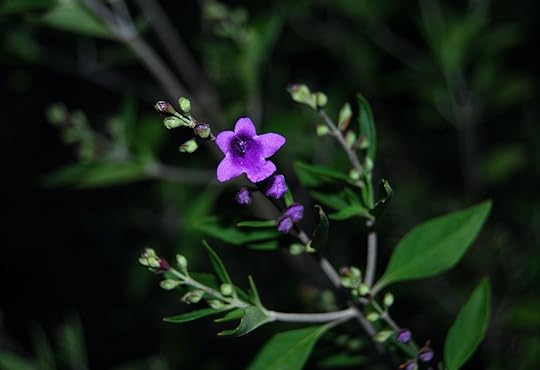
Photo: Peter Krisch/Shutterstock
Filling the air with a strong scent of mint when the leaves are bruised, the Australian mint bush, or prostanthera as it’s scientifically known, grows best in southern regions of the United States where summers are hot and winters are mild. Compact yet fast-growing, this highly aromatic Australian native can be planted directly in the ground in USDA zones 8-10 or displayed in pots in colder regions where it may be stored indoors throughout fall and winter.
A bushy, evergreen shrub with sweet pink-purple flowers that bloom in springtime, the Australian mint bush is not considered a culinary herb; however, leaves plucked from the plant can be steeped in hot water to create a herbal drink. Similar to English lavender, its pollen-rich blooms are known to attract bees and other beneficial insects to the garden. 

More like this: The 7 most fascinating flowers around the world you need to see in person
The post This spring, travel the world through your garden with these international plants appeared first on Matador Network.
New Zealand eliminating coronavirus

New Zealand, that country that just seems to be good at everything, looks like it’s won the battle against coronavirus too.
Last week, Prime Minister Jacinda Ardern cautiously announced the country had effectively “eliminated” COVID-19, with only one new case and four probable cases reported. The virus isn’t completely stamped out, but it is at a point where the country can easily identify and isolate any new cases, and quash any potential outbreak.
So it might be tempting, now, to look to New Zealand as a model in beating coronavirus. But it’s also important to understand that New Zealand is an island nation with under five million people, no land borders, and a culture very different from the United States. So comparing their methods to ours is, basically, comparing apples to kiwis.
What we can do, however, is see what New Zealand did right, learn from it, and see how even a small part of it might be applied at home.
It begins with the culture of unity.
Before anyone in New Zealand had ever heard of COVID-19, its culture was very much one of cooperation. No, not everyone saw things the same way, but while it may be a country for adventurous extremes, political extremes are rare.
And when people generally agree on politics, it’s a lot easier to agree on solutions to a pandemic.
“Largely it was a result of collective purpose,” says Dan Thomson, a small business owner in Christchurch. “New Zealand is a very astute country, and we all have similar beliefs. We don’t have a distrust in the media, we actually love our politicians and usually are in the center of the political spectrum. So everyone knows what their role is, and people all understood what had to happen.”
He went on to say how that differed from the US where, from what New Zealanders can gather from American news networks, there’s a great disconnect across states and regions about how best to fight the virus. Though it doesn’t look like the US will be on the same page about anything any time soon, at the very least we can look to New Zealand and see that if we could, somehow, put our differences aside, fighting this enemy would be a lot more efficient.
Borders were closed instantly and quarantines respected.

Photo: Cam Jones/Shutterstock
New Zealand closed its borders to every non-resident or citizen on March 19 when it only had 102 cases of the virus. Granted, it’s far easier to close borders in a country with no land borders, but it sealed off any potential outside infections before community spread was commonplace, which allowed contact tracing to be far easier than it would have been had the country waited.
It also instituted mandatory 14-day quarantines for all New Zealand nationals returning home from abroad, which people adhered to and respected. When I came back from Europe shortly after President Trump stopped all flights from Europe, I wasn’t greeted with much more than an LED sign at immigration reminding me to wash my hands. Not that I’m complaining about not being quarantined, but the difference in approach is dramatic.
New Zealand developed a strategy of elimination, not containment.
Only a few days after announcing the borders closed, Ardern announced the country’s plan to eliminate the virus, not simply contain it. It involved four levels of lockdown, the strongest of which was implemented a couple of days later. It mandated no travel outside the home aside from an hour of exercise and essential activities. Schools and nonessential businesses were closed, no large gatherings were permitted, and public venues like parks and harbors were also shuttered.
The strategy paid off almost immediately, with a spike in new cases with 89 on April 2, then 67 on April 6, and 54 on April 7. By the time Ardern announced the country would be moving back to Level 3 last week, the number of new cases was down to one.
It is likely too late for the US to adopt a strategy of elimination, and as our population is much larger and our borders far longer than New Zealand’s, it may not have been practical in the first place. But while this unprecedented event has no clear-cut solutions, and it’s well possible the world offers multiple successful strategies, it seems that New Zealand’s quick, strict measures worked for them.
Leadership offered clear, definitive communication.

Photo: Steve Todd/Shutterstock
Prime Minister Jacinda Ardern did not tiptoe around what New Zealanders needed to do if the country was to be successful in its elimination strategy. She announced early on that the country’s strategy would be elimination — not containment or suppression — and gave the country two days to prepare for it. She then kept the lockdown firm until numbers were low enough that the country’s director of general health felt it could be lightened and gave daily updates and briefings, once in a faded sweatshirt from what looked like her bedroom.
“Ardern is very good at acting as a mom would,” Thomson says. “She has loads of empathy but also calls it how she sees it.”
For the most part, the opposition National Party has gone along with Ardern’s plan for eliminating the virus, and there was little blaming or finger-pointing and rather a focus on solutions.
This style of leadership is why a recent poll found 88% of New Zealanders trust their government.
Widespread testing
New Zealand has tested about 2,190 people per 100,000, among the highest rates in the western world. For comparison, the United States has tested a little over 1,700 people per 100,000. Logistically, we have a much larger area and population distribution to test. But the numbers from New Zealand show what has already been widely reported: The more tests you give, the more you know, and the faster you can get healthy people out of quarantine.
Understanding that the economy will take a hit and going from there

Photo: YIUCHEUNG/Shutterstock
New Zealand gets six percent of its GDP from direct tourism and another four percent from tourism-supported industries, meaning a full 10 percent of the country’s GDP has been non-existent for six weeks. And it will be for the foreseeable future, until other countries catch up to New Zealand’s near-elimination.
“Businesses have suffered immensely and will continue to,” says Thomson. “Global trade and tourism will be affected long term, and this will result in loads of unemployment. But we’re all doing well under the circumstances. Everyone is feeling a bit more chilled about all of this.”
So why are Kiwis so much more “chilled” than the 30 million out of work Americans? Much of it goes back to the trust in government and the attitude of collective purpose. It also has a single-payer healthcare system, which has been looked at as a model by some examining how to fix healthcare in the US. Economic hardships aren’t taken lightly in New Zealand, but it also didn’t see people protesting because of its effects.
Again, this country’s model isn’t one that could be realistically replicated in the US, and given how much further along we are into the pandemic, it likely wouldn’t be as effective even if we could. But by looking to New Zealand not only as a model of action but also of culture, perhaps we can find some inspiration for how to handle these kinds of crises in the future. 

More like this: With bars open and kids in school, Sweden stands alone in its COVID-19 approach
The post What New Zealand did right, and what we can still learn from them appeared first on Matador Network.
Peru Rímac River pollution decline

The natural world is healing and thriving during the pandemic. Air pollution levels have plummeted, animals are claiming back their habitats, and waterways are getting cleaner.
Officials are reporting that the Rímac River that runs through Lima, Peru, is noticeably clearer since the country introduced its coronavirus lockdown. According to Luis Enrique Yampufé Morales, a spokesperson for Peru’s National Water Authority (ANA), the river’s increased transparency is a direct result of the decline in contamination from human activities.
He told Peruvian publication El Comercio, “It is appreciated that the water is cleaner and more crystalline. There is recovery of vegetation and migration of birds, especially at the river mouth.”
The dumping of garbage, construction materials, and waste from businesses in the river has diminished since the stay-at-home orders, giving the river a break.
As reported by Newsweek, and according to Francisco Dumler, chairman of the board the company that operated the water treatment plant, the amount of solid waste reaching the La Atarjea water treatment plant has been diminished by 90 percent.
Flor de María Huamani Alfaro, an ANA spokesperson, said in a statement, “The state of emergency has allowed us to observe the impact of human actions on water resources. For this reason it is important that we become aware and consider that the water in our rivers and irrigated channels are for human and agricultural consumption, so they should not be areas for garbage dumping or clearing.”
Once the lockdown is over, water authority officials hope people will continue to refrain from polluting the river. 

More like this: Chile’s rivers are in danger of exploitation. Here’s how Chileans are saving them.
The post Peru’s Rímac River is nearly transparent after pollution drops by 90 percent during lockdown appeared first on Matador Network.
Michigan mailing free condoms

Delivery services of all kinds have risen in popularity during the coronavirus lockdowns — from mystery book bags to cocktails, everything is deliverable these days. Given this trend, it makes sense that not only food, but the truly essential goods are also available for delivery — in Michigan, you can now get condoms delivered by mail.
The state’s health department is launching a new free condom delivery service to prevent accidental pregnancies and STD transmission during the coronavirus lockdown. The condoms-by-mail program will replace the free condom giveaways Michigan counties had been offering at bars and government buildings that are now closed.
Lynn Sutfin, a spokeswoman for the Michigan Department of Health and Human Services, told MLive.com, “We feel that it is extremely important during this public health crisis to continue to support our communities in protecting themselves against unintended pregnancy, STIs, and HIV.”
To receive your free condoms in the mail, you must request a delivery via email at MDHHS-FreeCondoms@Michigan.gov. Packages will include 10 condoms and, as an added bonus, 10 packets of lubrication. And don’t worry, packages will arrive unmarked to spare you from any potential embarrassment if you happen to be quarantining with your parents. 

More like this: Everything you need to know about having sex while social distancing
The post Michigan is mailing free condoms to residents during the lockdown appeared first on Matador Network.
Aquarium plea to FaceTime eels

As everyone is largely confined to their respective homes, it’s easy to focus on how social distancing is affecting our own relationships and forget that animals are similarly impacted by the sudden absence of humans in their lives.
The spotted garden eels at Tokyo’s Sumida Aquarium, for example, are used to seeing crowds of humans when they poke their heads out of the sand. Since the aquarium’s closure at the beginning of March, however, the fish see very few, and aquarium staff are concerned that they are forgetting what humans look like.
On its website, the aquarium explained that the only faces they see regularly are those of the keepers, and they have started to hide in the sand in fear when they pass by. Consequently, the keepers are unable to check properly on the well-being of the eels and care for them as they usually would.
To remedy the situation, the aquarium is asking people to FaceTime the eels to remind them what regular human contact feels like. The aquarium is setting up five tablets facing the eel tank and asking people to participate in video calls with the eels. They’re calling it the “face-showing festival,” and it’s happening May 3-5.
And unlike most FaceTime calls, there’s no pressure to make awkward conversation. All you have to do is wave, show your friendly face to the eels, and keep your voice down so as not to frighten them. 

More like this: Marine biologist captures extraordinary footage of sea angels under the ice in Russia
The post Japanese aquarium wants people to FaceTime their garden eels before they forget humans exist appeared first on Matador Network.
Vodka pops are perfect for summer

Judging by the 55 percent increase in alcohol sales, drinks have been a helpful therapeutic to get everyone through this pandemic. But as summer approaches, we need to refine our drinking strategy a bit. Summer is the perfect season for boozy frozen treats, and Costco knows how to satisfy your craving. For a refreshing snack that gets you tipsy, and also evokes a sense of nostalgia, and helps you forget your social distancing woes, Costco’s Vodka Martini Slim Chillers check all the boxes. Remember those freeze pops from your childhood, which always hit the spot on a humid summer day? Now imagine it also could get you buzzed.
Coming in new vodka-soaked flavors like orangeberry mimosa, peach mango bellini, and blackberry pomegranate sangrini, these pops are made with eight-times distilled, charcoal-filtered vodka. Phil Hurley, the creator of Slim Chillers, told PEOPLE, “My primary goal was not to eliminate the sugar, but lower it to a point where you could still enjoy your cocktail, but with a lot less guilt.”
Slim Chillers have become a summer tradition in states lucky enough to have access to them. They’re available at BevMo stores, local liquor stores in California, and select Costco locations in California, Arizona, Nevada, and Colorado. But given the current climate, it might be best to simply order them online. 
This story originally published on June 6, 2018, and was updated on May 1, 2020

More like this: The US is running out of crowlers as breweries shift sales to-go
The post Costco’s vodka martini freeze pops are back to help get you through summer appeared first on Matador Network.
France urged to eat more cheese
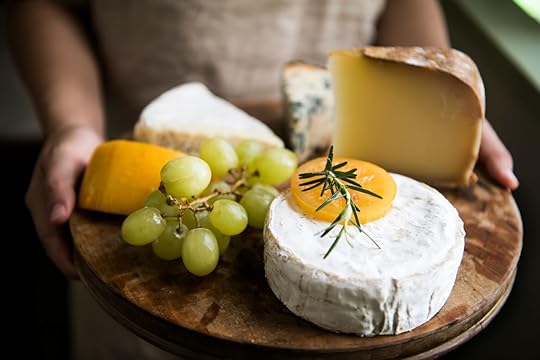
The French love their cheese, but with markets and cheesemongers closed to slow the spread of COVID-19, people in the country haven’t been buying as much traditional French cheeses as before. The slowdown has put the dairy industry in a tight spot. So much so that Terre de Lait, the dairy industry collective, is asking people to “eat cheese in solidarity” with the traditional cheesemakers of France.
In a press release, Terre de Lait announced a campaign for a national “fromagissons.” The phrasing comes from combining fromage (cheese) with agissons (“let’s act”). And who doesn’t want to stand up for cheese? The final stated objective: “to encourage the consumption of traditional cheeses.”
According to the release, the fromagissons movement will highlight traditional cheeses from regions like Saint-Nectaire, Camembert, and Reblochon to encourage consumers to purchase them “without making them feel guilty” about the state of the French cheese industry. Sales of certain iconic cheeses have fallen by as much as 60 percent since the closures of restaurants and shops. Which is why the release states that now is the time to “work together so that France remains that of 1,000 cheeses.”
France isn’t the only country where a national food is in dire times. In Belgium, a 750,000-ton surplus of potatoes led the government to ask people to eat more frites.
As far as ways to help out in France go, eating more cheese is far from the most difficult. The most impacted are Protected Designation of Origin (PDO) cheeses. These can only be made by following certain regulations in restricted areas, and often have tight windows of freshness.
“The situation is critical and requires a rapid increase in consumption,” Damien Lacombe, the president of the dairy collective Sodiaal, told the French magazine Agri Culture. “Local cheeses, there are many producers, often located in difficult areas, and cheese factories which participate in the economic dynamics of many territories.”
In the same Agri Culture story, another dairy collective said that 2,000 tons of cheese was supposed to be sold in April, but only 500 tons left the shelves.
This is quite possibly one of the only times that purchasing cheese for an extravagant cheese plate is equivalent to doing a public service. Let’s answer the call for cheese and embrace the fromagissons movement. 

More like this: Belgians asked to eat fries twice a week to combat potato surplus
The post France urged to eat more cheese to save traditional cheesemakers appeared first on Matador Network.
Matador Network's Blog
- Matador Network's profile
- 6 followers



